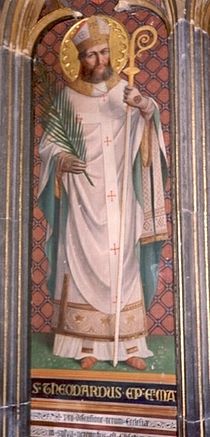
Hubert of Liège was a Christian saint who became the first bishop of Liège in 708 A.D. He is the patron saint of hunters, mathematicians, opticians and metalworkers. Known as the "Apostle of the Ardennes", he was called upon, until the early 20th century, to cure rabies through the use of the traditional Saint Hubert's Key.

Amandus, commonly called Saint Amand, was a bishop of Tongeren-Maastricht and one of the catholic missionaries of Flanders. He is venerated as a saint, particularly in France and Belgium.
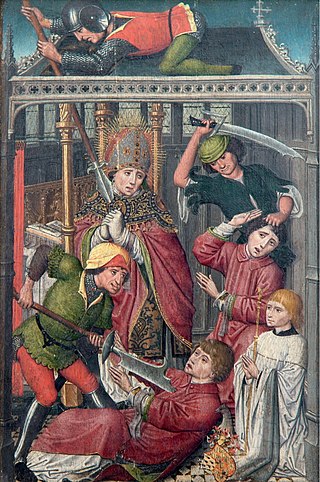
Lambert of Maastricht, commonly referred to as Saint Lambert, was the bishop of Maastricht-Liège (Tongeren) from about 670 until his death. Lambert denounced Pepin's liaison with his mistress or bigamous wife Alpaida, the mother of Charles Martel. The bishop was murdered during the political turmoil that developed when various families fought for influence as the Merovingian dynasty gave way to the Carolingians. He is considered a martyr for his defence of marriage. His feast day is September 17.

Sep. 9 - Eastern Orthodox liturgical calendar - Sep. 11
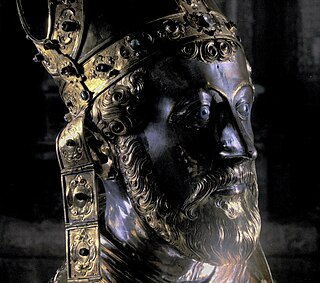
Saint Servatius was bishop of Tongeren. Servatius is patron saint of the city of Maastricht and the towns of Schijndel and Grimbergen. He is one of the Ice Saints. His feast day is May 13.
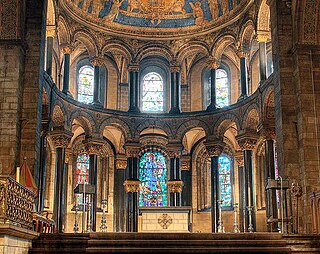
Mosan art is a regional style of art from the valley of the Meuse in present-day Belgium, the Netherlands, and Germany. Although in a broader sense the term applies to art from this region from all periods, it generally refers to Romanesque art, with Mosan Romanesque architecture, stone carving, metalwork, enamelling and manuscript illumination reaching a high level of development during the 11th, 12th and 13th centuries.

Saint Hadelin, born in Guyenne, was one of the scholarly monks who preached Christianity and started conversion work in what is now Belgium, along with Saint Remaclus.

Saint Trudo was a saint of the seventh century. He is called the "Apostle of Hesbaye". His feast day is celebrated on 23 November.

Saint Leudwinus, Count of Treves founded an abbey in Mettlach. He was Archbishop of Treves and Laon. As patron saint of the Mettlach parish, his relics are carried through the town by procession at the annual Pentecost celebration. His feast day is September 23. He was the son of Saint Warinus, the paternal grandson of Saint Sigrada, and nephew of Saint Leodegarius.
Remaclus was a Benedictine missionary bishop who is venerated as a saint. For his life, see Vita Remacli Episcopi at Abbatis, in: Monumenta Germaniae Historica, Scriptores rerum Merovingicarum, 5

Zepperen is a village and a former municipality. It is part of the municipality of Sint-Truiden in the province of Limburg in Belgium.
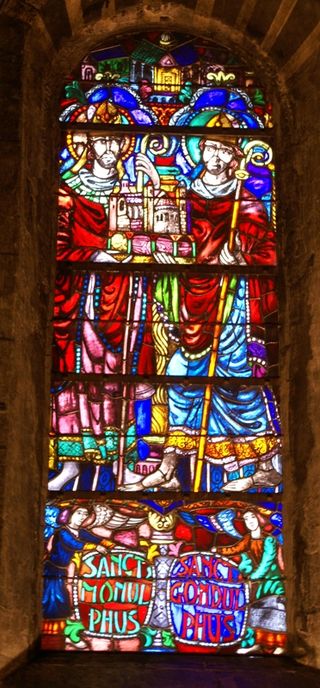
Monulph was a sixth-century bishop of Tongeren and Maastricht, and is revered as a Roman Catholic saint.
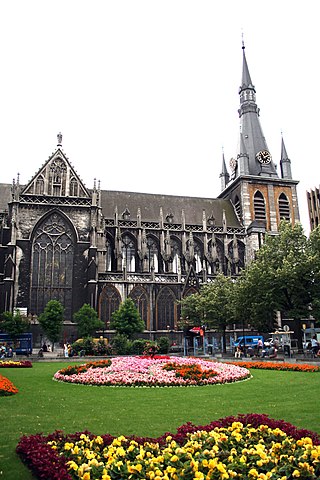
The Diocese of Liège is a Latin Church ecclesiastical territory or diocese of the Catholic Church in Belgium. The diocese was erected in the 4th century and presently covers the same territory as Belgium's Liège Province, but it was historically much larger. Currently, the diocese is a suffragan in the ecclesiastical province of the Archdiocese of Mechelen-Brussels. Its cathedra is found within St. Paul's Cathedral in the episcopal see of Liège.

Munsterbilzen Abbey was an abbey of Benedictine nuns in Munsterbilzen, Limburg, Belgium, founded in around 670 by Saint Landrada. It was plundered by Vikings in 881 but restored. From the 9th century it was dedicated to Saint Amor.

The Princely Abbey of Stavelot-Malmedy, also Principality of Stavelot-Malmedy, sometimes known with its German name Stablo, was an ecclesiastical principality of the Holy Roman Empire. Princely power was exercised by the Benedictine abbot of the imperial double monastery of Stavelot and Malmedy, founded in 651. Along with the Duchy of Bouillon and the Prince-Bishopric of Liège, it was one of only three principalities of the Southern Netherlands that were never part of the Spanish Netherlands, later the Austrian Netherlands, which after 1500 were assigned to the Burgundian Circle while the principalities were assigned to the Lower Rhenish Imperial Circle.
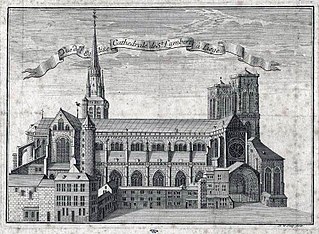
St. Lambert's Cathedral was the Roman Catholic cathedral of Liège, modern-day Belgium, until 1794, when its destruction began. This enormous Gothic cathedral, dedicated to Saint Lambert of Maastricht, occupied the site of the present Place Saint-Lambert in the centre of Liège.

Gerard van Groesbeeck (1517–1580) was a prelate who became the 88th Bishop of Liège, as well as Prince-Abbot of Stavelot and a cardinal of the Catholic Church.
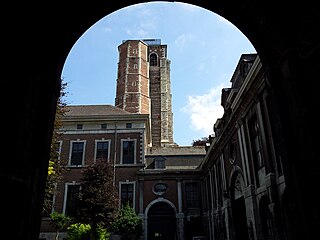
Sint-Truiden Abbey or St Trudo's Abbey is a former Benedictine monastery in Sint-Truiden in the province of Limburg, Belgium. The abbey was founded in the 7th century and was one of the oldest and most powerful in the Low Countries. The town of Sint-Truiden grew up around it. The great Romanesque abbey church, dedicated to Saint Remaclus and Saint Quintin, was demolished in 1798, four years after the suppression of the abbey.
The Roman Catholic Diocese of Maastricht was a Roman Catholic jurisdiction in parts of present Netherlands and Belgium, which has been nominally revived as a Latin titular bishopric.
